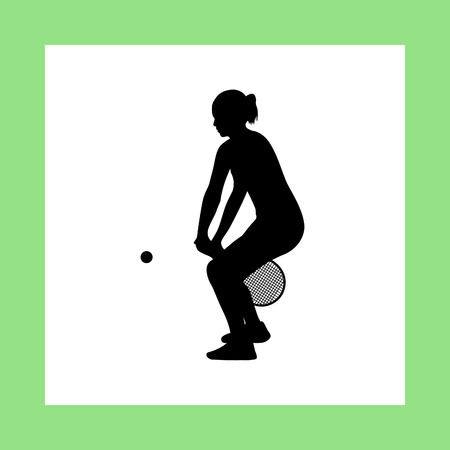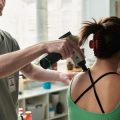1. Understanding the Risk of Re-Injury
After completing ankle or knee rehabilitation, it’s important to remember that healing doesn’t stop once you’re out of physical therapy. One of the biggest challenges people face is preventing re-injury. Let’s look at why re-injury happens and what everyday activities in American life might put your joints at risk.
Common Factors That Contribute to Re-Injury
- Muscle Weakness: Even after rehab, muscles around the ankle or knee may still be weaker than before the injury, making them less able to support your joints during movement.
- Poor Balance and Coordination: Ankle and knee injuries can affect your balance. Without proper training, you may be more likely to twist or roll your joint again.
- Returning Too Quickly: Jumping back into sports or heavy activity before your body is ready is a common mistake that can lead to setbacks.
- Lack of Flexibility: Stiff muscles or limited range of motion can make you move differently, which may increase stress on healing joints.
- Improper Footwear: Wearing shoes that don’t provide enough support, especially during sports or long walks, can make re-injury more likely.
At-Risk Activities in Everyday American Life
Certain routines and hobbies in the U.S. can put extra strain on recovering ankles and knees. Here are some examples:
| Activity | Why It’s Risky |
|---|---|
| Playing basketball or pickup soccer | Quick changes in direction and jumping can easily stress healing joints |
| Running on hard surfaces (concrete sidewalks) | The impact increases pressure on ankles and knees |
| Mowing the lawn or gardening | Bending, twisting, and uneven ground can cause slips or awkward movements |
| Dancing at social events | Sudden pivots and steps may catch your joint off guard if it’s not fully recovered |
| Climbing stairs frequently (at home or work) | Repetitive motion puts ongoing stress on recovering ligaments and muscles |
The Importance of Recognizing Personal Limitations
It’s easy to feel excited about getting back to normal life, but everyone heals at their own pace. Pay attention to signs like pain, swelling, or instability when you’re active. These are your body’s way of saying “slow down.” Being honest with yourself about what you can safely do is one of the best ways to stay healthy for the long run.
2. Integrating Strength and Mobility into Your Routine
After completing your ankle or knee rehabilitation, it’s important to keep your joints strong and flexible to avoid getting hurt again. Whether you prefer working out at home or hitting the gym, there are practical exercises you can add to your weekly routine that fit American lifestyles. Here’s a guide to help you maintain joint health and reduce your risk of re-injury.
Why Strength and Mobility Matter
Building strength around your ankle and knee joints helps them handle daily activities—like walking the dog, climbing stairs, or playing with your kids—without strain. Mobility keeps your joints moving smoothly so you can stay active and independent.
Simple At-Home Exercises
You don’t need fancy equipment to protect your joints. Try these easy moves with items found in most American homes:
| Exercise | How To Do It | Main Benefit |
|---|---|---|
| Chair Squats | Sit back into a chair and stand up slowly. Repeat 10-15 times. | Strengthens thighs and glutes for better knee support. |
| Heel Raises | Stand behind a chair, rise onto your toes, hold, then lower down. Do 2 sets of 12 reps. | Builds calf muscles to stabilize ankles. |
| Ankle Alphabet | Sit down, lift one foot, and “write” the alphabet in the air with your toes. | Improves ankle mobility and control. |
| Lateral Leg Raises | Hold onto a counter for balance, lift one leg out to the side, then lower. Repeat 10 reps per side. | Strengthens hip muscles for better alignment and balance. |
Gym-Based Exercises for Joint Health
If you have access to a gym, you can use machines and weights to further support your recovery. Remember to start light and increase intensity as you get stronger:
| Exercise | Equipment Needed | Main Benefit |
|---|---|---|
| Leg Press Machine | Leg press machine (adjust weight) | Strengthens both knees safely with controlled movement. |
| Bosu Ball Balance Drills | Bosu ball or balance trainer | Improves ankle stability and overall balance. |
| Cable Hip Abductions | Cable machine with ankle strap attachment | Tones hip muscles for better knee tracking during activity. |
| Treadmill Walking (Incline) | Treadmill (set incline low) | Boosts endurance while gently challenging ankle and knee joints. |
Tips for Sticking with Your Routine
- Create a schedule: Aim for at least 2-3 sessions per week, mixing strength and mobility work.
- Set reminders: Use your phone or smart speaker (like Alexa or Google Home) to remind you when it’s time to exercise.
- Track progress: Jot down what you do each session—seeing improvement is motivating!
- Add variety: Try different exercises every few weeks to keep things interesting and challenge new muscles.
If You Feel Pain…
Mild soreness is normal when starting new exercises, but sharp pain isn’t. If something doesn’t feel right, stop that exercise and consult your healthcare provider or physical therapist before continuing.
Staying consistent with strength and mobility training is key for preventing re-injury after rehab. With these simple strategies, you’ll be ready for whatever life throws your way—whether it’s chasing after grandkids or enjoying a walk in the park.
![]()
3. Navigating Sports and Recreational Activities Safely
Getting Back in the Game: A Step-by-Step Approach
After finishing rehab for your ankle or knee, it’s normal to feel excited—and maybe a little nervous—about returning to sports and activities you love. Whether you’re shooting hoops, hitting the trails, or pounding the pavement on a run, taking the right steps can help you stay active and avoid another injury.
Popular U.S. Activities: What to Watch Out For
| Activity | Main Risks | Tips for Safe Return |
|---|---|---|
| Basketball | Ankle sprains, sudden stops/turns, jumping injuries | Wear high-top shoes for support; warm up well; focus on balance drills; avoid playing on uneven surfaces |
| Running (Road/Trail) | Overuse injuries, slips/trips, poor running form | Increase mileage slowly (no more than 10% per week); use supportive shoes; run on even ground when possible; include stretching in your routine |
| Hiking | Ankle twists, unstable terrain, fatigue-related falls | Use hiking boots with ankle support; carry trekking poles; choose trails that match your current ability level; take breaks as needed |
Listen to Your Body and Pace Yourself
Your body will give you signs if something isn’t right—like swelling, pain, or weakness. Don’t push through discomfort. If you feel anything unusual, stop the activity and rest. It’s better to take a short break now than face another long recovery later.
Key Reminders for All Activities:
- Warm Up First: Always start with light cardio and dynamic stretches (like leg swings or arm circles) to get your muscles ready.
- Start Slow: Ease back into activity with shorter sessions and lower intensity. Gradually build up as your strength and confidence return.
- Use Supportive Gear: Braces, tape, or compression sleeves can add extra support during high-risk activities.
- Stay Consistent with Rehab Exercises: Keep doing your prescribed strengthening and balance exercises even after formal rehab ends.
- Buddy Up: Exercising with a friend can be safer (and more fun), especially when trying new activities post-rehab.
The Role of Physical Therapy Follow-Ups
If you’re not sure how to progress—or if an activity feels risky—schedule a follow-up with your physical therapist. They can check your movement patterns, suggest specific drills for your favorite sport, and help you set realistic goals for getting back out there safely.
4. Adapting Workplace and Daily Activities
Why Modifying Your Routine Matters
After completing rehabilitation for ankle or knee injuries, it’s important to make adjustments in your daily life and work environment. These changes help prevent re-injury and allow your joints to stay strong and healthy over time. American work culture often involves long hours at a desk, commuting by car, and busy schedules that don’t always prioritize movement. By making small but smart modifications, you can protect your joints and keep up with your lifestyle.
Ergonomic Tips for the Office
Many people in the U.S. spend much of their day sitting at a desk or working on computers. Poor posture and repetitive movements can put extra stress on healing ankles and knees. Here are some practical ergonomic tips:
| Task | What to Do | Why It Helps |
|---|---|---|
| Sitting at a Desk | Use an adjustable chair with good lumbar support; keep feet flat on the floor or on a footrest; knees at hip level or slightly lower | Reduces pressure on knees and ankles, supports proper alignment |
| Standing Workstations | Alternate between sitting and standing; use an anti-fatigue mat; wear supportive shoes | Prevents stiffness, improves circulation, reduces joint fatigue |
| Lifting Objects | Bend at hips and knees (not back); hold items close to your body; avoid twisting motions | Protects joints from strain or sudden injury |
| Taking Breaks | Set reminders to stand up, stretch, or walk around every hour | Keeps joints mobile and reduces stiffness from prolonged sitting |
Making Commutes Joint-Friendly
Commuting is a big part of American life, whether you’re driving, taking public transportation, or biking. Here’s how you can make your commute easier on your rehabilitated joints:
- Driving: Adjust your seat so your knees are slightly bent and not pressed against the dashboard; take breaks during long drives to stretch.
- Public Transportation: Stand if possible during short rides to avoid stiffness; if seated, change position often.
- Biking: Make sure your seat height is appropriate to reduce stress on knees; use flat pedals or pedal straps as needed for ankle support.
- Walking: Wear cushioned, supportive shoes; plan routes with even surfaces when possible.
Simple Adjustments in Everyday Life
You can also adapt household chores and personal routines to further protect your joints:
| Activity | Suggested Modification |
|---|---|
| Laundry/Carrying Groceries | Use carts or bags with wheels instead of carrying heavy loads by hand. |
| Cleansing Floors/Vacuuming | Bend at the hips and knees rather than the waist; switch hands regularly to avoid overuse. |
| Stair Climbing | If available, use elevators or ramps; when using stairs, take them slowly and use handrails for support. |
| Lawn Care/Gardening | Kneel on padded mats or sit on low stools; avoid squatting for long periods. |
The Takeaway: Stay Mindful Every Day
The key is being aware of how everyday activities impact your recovering joints. Small adjustments can make a big difference in preventing setbacks while keeping you active and independent in both work and daily life.
5. When and How to Seek Ongoing Professional Support
Recognizing Signs of Potential Problems
After completing rehabilitation for an ankle or knee injury, it’s important to stay alert for signs that may suggest something isn’t quite right. Early recognition can help prevent setbacks or more serious injuries. Watch out for these signs:
| Sign | What It Might Mean |
|---|---|
| Pain that gets worse with activity | Possible re-injury or overuse |
| Persistent swelling or bruising | Ongoing inflammation or new injury |
| Feeling unstable or “giving out” | Weakness in muscles or ligaments |
| Limited range of motion | Stiffness, scar tissue, or incomplete healing |
| Numbness or tingling sensations | Nerve involvement or circulation issues |
The Role of Follow-Up Care in the U.S.
Follow-up care is a key part of long-term recovery after ankle or knee rehab. In the U.S., this usually means scheduled appointments with your physical therapist (PT) or physician, even after you feel better. These check-ins help to:
- Monitor your progress and adjust your home exercise plan as needed.
- Catch early warning signs before they become bigger problems.
- Provide guidance on returning to sports, work, or daily activities safely.
- Help you set new goals and maintain motivation for continued improvement.
Typical Follow-Up Schedule After Rehab
| Time After Rehab Ends | Common Follow-Up Actions |
|---|---|
| First 1-3 months | Monthly visits with PT; doctor visit if problems arise |
| 3-6 months | Every other month check-ins; focus on prevention strategies |
| 6-12 months and beyond | As needed, especially if pain, swelling, or instability returns |
How to Access Ongoing Support in the U.S.
If you notice any concerning symptoms, don’t hesitate to reach out to your healthcare team. Here are common ways to access support:
- Your Physical Therapist: Most clinics offer follow-up appointments even after your main therapy program ends. Many U.S. states have “direct access,” so you can see a PT without a referral.
- Your Primary Care Doctor: For general concerns, medication adjustments, or referrals to specialists.
- Sports Medicine Physicians: For athletes or active individuals needing specialized advice.
- Telehealth Services: Many providers now offer virtual check-ins for convenience and quick feedback.
- Community Resources: Local gyms, YMCAs, senior centers, and running clubs often have injury-prevention classes and workshops led by certified professionals.
- Your Insurance Provider: Check what ongoing rehab services are covered—many plans include post-rehab visits and preventive care benefits.
If You’re Unsure What To Do Next…
If you’re not sure whether your symptoms need professional attention, remember: it’s always better to ask than ignore a potential problem. Your healthcare team is there to help you stay healthy and active for the long run!


